& Construction

Integrated BIM tools, including Revit, AutoCAD, and Civil 3D
& Manufacturing

Professional CAD/CAM tools built on Inventor and AutoCAD
6 min read
We all have what seem to be supercomputers in our pockets. An endless variety of apps and experiences with computing power that matches today’s desktops. But consider the power of a real supercomputer, and suddenly that smartphone pales in comparison. You can find supercomputers solving some serious problems in the fields of:
Whether its for automobiles, energy, or explaining the origins of our universe, supercomputers seem to be able to do it all. Unlike our smartphones and computers, supercomputers are made from tens of thousands of CPUs, with thousands of gigabytes of RAM. All of this speed isn’t measured in your typical gigahertz. A supercomputer is measured by how many floating-point operations per second it can perform, called flops.

The continued advancement of supercomputers can be accredited to one man that many consider The Father of Supercomputers, Seymour Cray. As Joel Birnbaum, former CTO at Hewlett-Packcard puts it:
“It seems impossible to exaggerate the effect he had on the industry; many of the things that high performance computers now do routinely were at the furthest edge of credibility when Seymour envisioned them. Seymour combined modesty, dedication and brilliance with vision and an entrepreneurial spirit in a way that places him high in the pantheon of great inventors in any field. He ranks up there with Edison and Bell of creating an industry.”
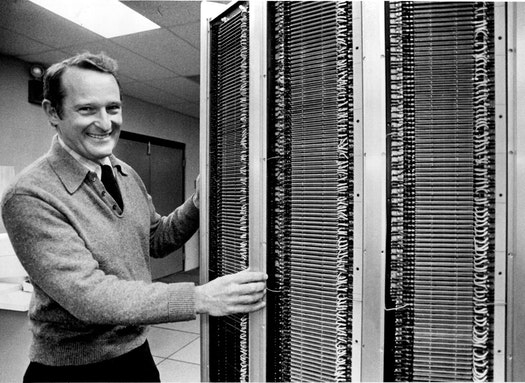
Seymour’s story begins like many other famous electrical engineers. He had a fascination with electronics at an early age, and Cray says that he spent as much time as possible at his school’s electrical engineering laboratory. After high school Cray used his natural talents in electrical engineering in the US Army as part of a communications platoon.
Seymour’s first journey in supercomputing began at Engineering Research Associates (ERA). It was here that he began working with a variety of computer technologies, from vacuum tubes to transistors and magnetic amplifiers.
Cray’s daughter, Susan Cray-Borman, remembers her father as an intensely focused and solitary man. She would often find him hovering over a piece of graph paper with a finely sharpened pencil, working away at some challenging engineering problem in a quiet space. Other colleagues described Seymour’s brilliance at knowing when he had achieved that perfect balance of design simplicity and knew exactly where to stop.
The video below gives a great perspective on Seymour’s contributions and personality from both family and colleagues:
Cray went through several management transitions and mergers during his time at ERA, and was vocal about his frustrations with corporate culture. He later teamed up with William C. Norris, founder of ERA, and the two left the company to found Control Data Corporation (CDC).
In 1957 Cray and his team released the CDC 1604, the world’s first fully transistorized supercomputer that worked without vacuum tubes. A few years later Cray followed up with the CDC 6600. This $7 million machine touted the world’s fastest clock speed of 100 nanoseconds. It was also the first supercomputer to use Freon to keep its electronic components from overheating. CDC would later release another series of successful supercomputers, including the CDC 7600 in 1968 and CDC 8600 in 1970.

At CDC Seymour continued to struggle with his business counterparts. When William Norris asked Cray for a five-year business plan for CDC, he responded with:
“Five-year goal: Build the biggest computer in the world. One-year goal: Achieve one-fifth of the above.”
The situation escalated to Seymour convincing Norris to relocate his laboratory over 100 miles away to Minneapolis. One can imagine the intense focus that Cray required to do his creative work conflicting with a busy office environment.
Cray decided to begin a new business venture in 1975, Cray Research. It was here that Seymour developed the Cray-1, which wasn’t your ordinary supercomputer. This machine completely replaced transistors with integrated circuits, and also introduced a new technology called Vector Processing.
Vector Processing basically allowed Cray’s supercomputer to execute an instruction set that operated on one-dimensional data arrays. This technology boosted system performance when compared with traditional scalar processing techniques used in other supercomputers. The use of integrated circuits also allowed Cray’s machine to reach speeds of 136 megaflops.
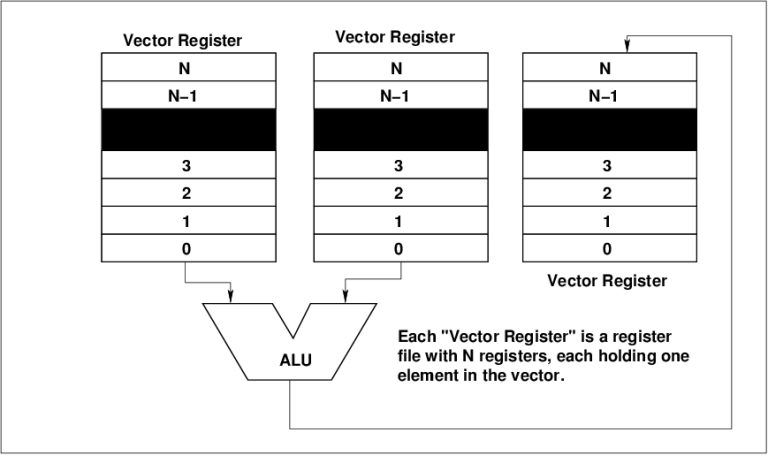
What’s really remarkable about the Cray-1 isn’t just its breakneck speeds, but its elegant design.
Look at most computers and you’ll see a bland variation of black and white boxes. Cray wanted to do something different with the Cray-1, so he designed his supercomputer in the shape of the letter C. It looks like something out of an episode of Star Trek.
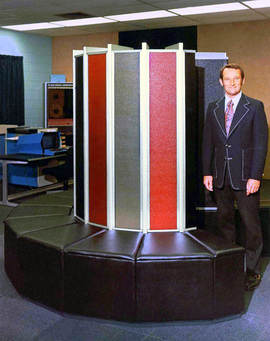
The shape of the Cray-1 wasn’t just for branding purposes. This unique configuration allowed speed-dependent modules to be installed closer together with shorter wire lengths. As we all know, shorter wire lengths lead to faster travel times for electrical signals.
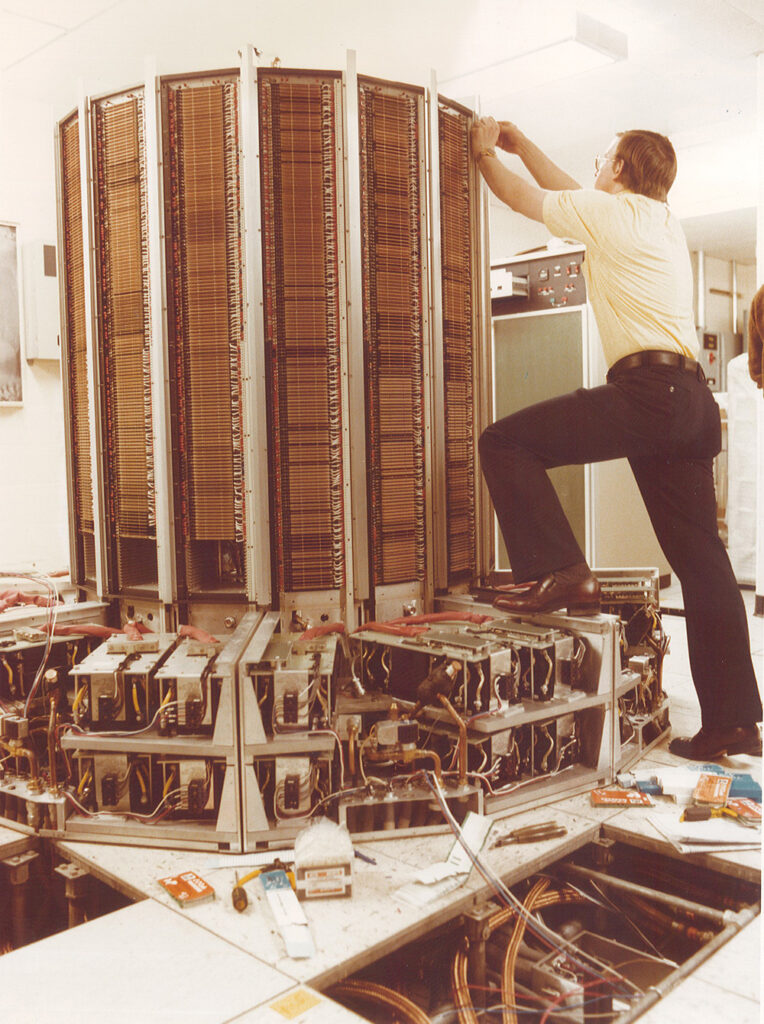
There was also a cushion that surrounded the supercomputer which contained its power supply and air conditioning units. This cushion didn’t just house hardware, it also allowed a maintenance technician to be as comfortable as possible when servicing the machine. Seymour designed not only a supercomputer but an entire physical experience. When the Cray-1 was released in 1977 for $8.8 million, it earned the nickname of “World’s most expensive loveseat.”
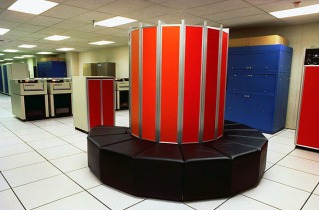
There were a variety of other fine touches that Cray introduced in nearly all of his supercomputers. For example, the CDC 7600 pictured below featured blue-glass doors and walnut trim. Seymour’s unique combination of stellar performance and unique aesthetics made his supercomputers a work of engineering art.

The Cray-1 was a commercial success, and Seymour continued to push for advancements in the supercomputing space over the next two decades. In 1985 Cray Research released the Cray-2. This beast packed components so closely together that it required liquid Fluorinert to keep components from overheating. It also was the first supercomputer to break the gigaflop ceiling, achieving speeds of 1.9 gigaflops.
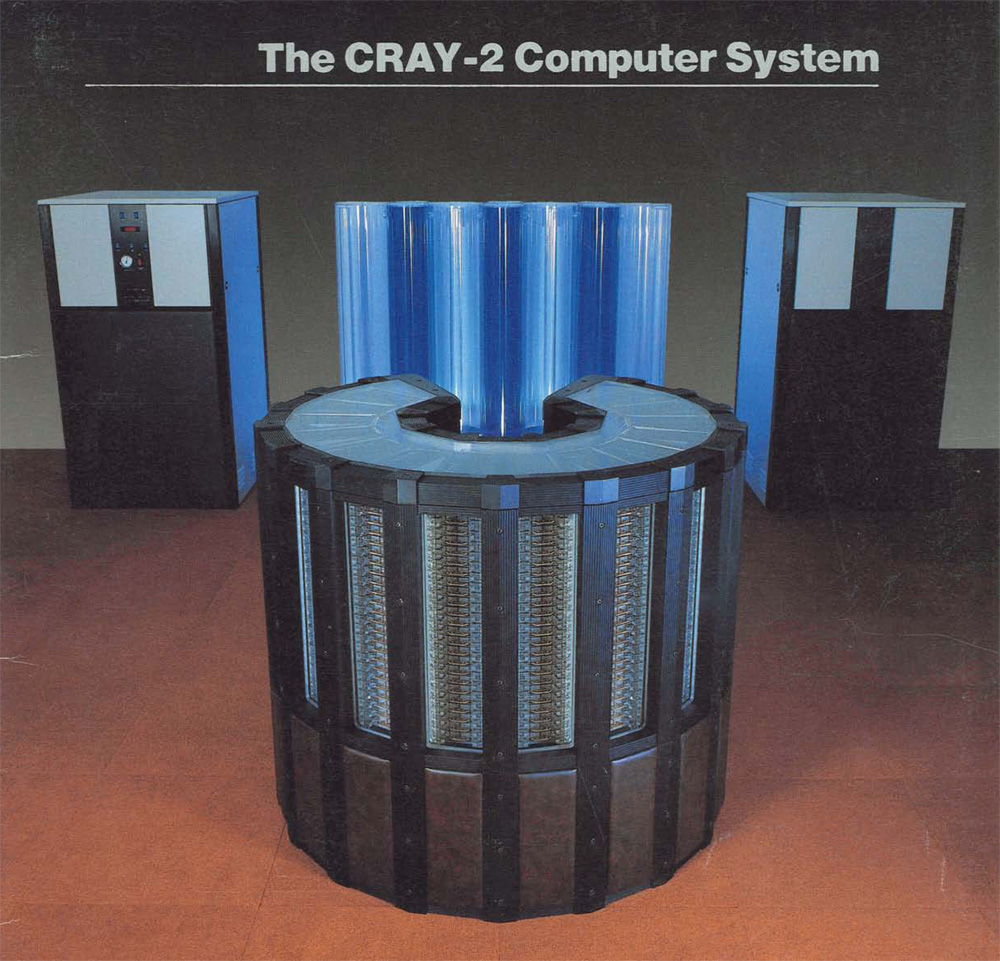
Seymour would continue his passion for supercomputer development with the Cray-3, which never saw the commercial success it sought. This might have been due to Seymour’s experimentations with using gallium arsenide processing chips to replace silicon. After the failure of the Cray 3, Seymour formed Cray Computer Corporation (CCC) in 1989. It was here that he spent time behind closed doors working on the Cray 4, which never saw the light of day.
Sadly, on October 5th, 1996 Seymour passed away after struggling with injuries from a car accident.
Seymour Cray was nothing short of an innovator in the world of supercomputers. His developments helped pushed the industry forward, and he always remained focused on solving engineering problems in the simplest way possible. With a unique combination of densely packed components and unique aesthetic designs, the Cray supercomputers were way ahead of their time.
Seymour’s supercomputer designs still sit at the top of the list for most powerful supercomputers, and this man’s legacy has not been lost to history. In 1997 IEEE established the Seymour Cray Computer Engineering Award to recognize innovative contributions to high-performance computing. May we continue to build upon his achievements!
Follow in the footsteps of this powerful engineer, try Autodesk EAGLE for free today!
By clicking subscribe, I agree to receive the Fusion newsletter and acknowledge the Autodesk Privacy Statement.
Success!
May we collect and use your data?
Learn more about the Third Party Services we use and our Privacy Statement.May we collect and use your data to tailor your experience?
Explore the benefits of a customized experience by managing your privacy settings for this site or visit our Privacy Statement to learn more about your options.